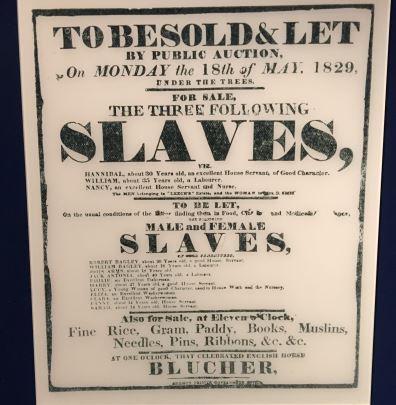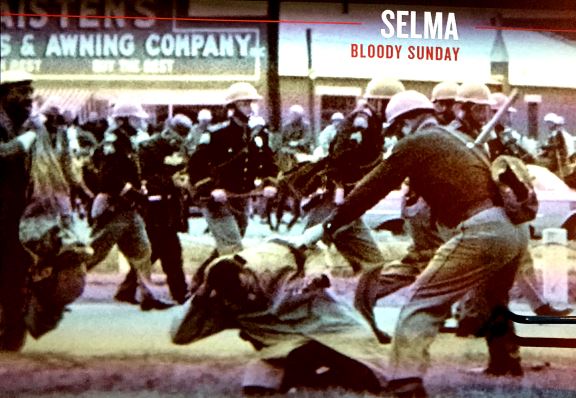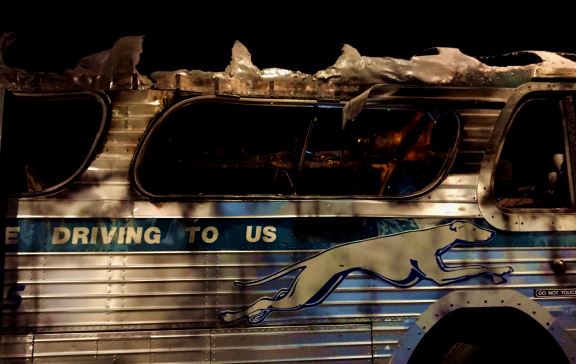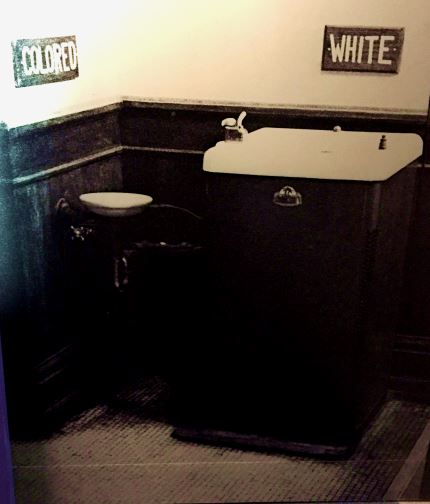
“…that all men are created equal.”
by
Deborah Fagan Carpenter
Memphis, Tennessee has the dubious standing of being the city in which Dr. Martin Luther King, Jr. lost his life to an assassin in 1968. Memphis also has the honor of housing a world-class museum that pays tribute to Dr. King and the nonviolent human rights movement he was at the helm of at the time of his death.
February is Black History Month, which seemed like an ideal time to revisit the National Civil Rights Museum after its post-renovation reopening in 2014. The museum, built around the site where the murder took place—the balcony of the Lorraine Motel—originally opened in 1991. From its beginning, the permanent and special exhibits that focus on the struggle for equal rights were authentic and beautifully implemented. Since the renovation, however, they are more inclusive and interactive.

The theme of ‘Struggle’ is immediately established upon entering the museum’s atrium, where a 7,000-pound bronze sculpture, Movement to Overcome by artist Michael Pavlovsky looms large. In the first gallery space that follows, is a replica of a ship’s hull with bronze sculptures of slaves in holding, which establishes the cramped space in which the captives were transported across the ocean. Visitors can crouch into the hull to get an idea of the misery of such a voyage.

All of the galleries, thoughtfully laid out, demonstrate how humans were treated as objects and how their ultimate resistance against cruelty and captivity began. A combination of three-dimensional sculpture, film footage, recordings and authentic, preserved objects follow the struggle for equality. Reconstruction, the Jim Crow laws, the fight for quality education, equal pay and the move for human rights, in general, are innovatively brought to life.

“Move to the back of the bus!” booms from a recording when anyone steps onto the bus in which Rosa Parks refused to sit in the back. Multiple television sets of the era show broadcasts about the Kennedy assassination and the horrific events on the Edmund Pettus Bridge on Sunday, March 7, 1965. The remains of the burned-out freedom rider’s bus and photos showing the events that surrounded its demolition in Anniston, Alabama put the violence of the time in perspective. Films and recordings of the sit-ins at lunch counters throughout the South shed a light on the hatred exhibited by fellow human beings.

The landmark Brown vs. Board of Education Supreme Court decision in 1954, the freedom riders journey, the march from Selma to Birmingham, Freedom Summer, the establishment of the Southern Leadership Conference and the NAACP are all described in visual and audiovisual detail. Actual film footage from Bloody Sunday shows the beatings of peaceful protesters such as now Representative John Lewis.

Each vignette gradually slopes upward to the conclusion of the exhibit, the rooms that Dr. King and his fellow movement leaders occupied and the balcony outside his room on which he was fatally shot. The boarding house across the street is also part of the tour, where the room rented by alleged shooter James Earl Ray and the bathroom from which the fatal shot was fired have been preserved.
The museum offers a unique and reasonably complete look into a huge and an essential piece of American history. It also provides a wonderful opportunity for self-reflection.

Photos: Deborah Fagan Carpenter



after the crass commercialization of Dr. King’s words used in the super bowl auto ad, it’s great to have an eloquent portrait of his legacy contained in the civil rights museum. good job Deborah!
Very nice piece, Deborah. I second your emotion: moving museum!
Thanx 4 sharing! Perfect reflection for Black History Month.
It really is a gem in the city. I met a young woman from Manhattan while I was there yesterday who was so impressed with it, as well as some other history-centered attractions here. She was having a positive southern experience.